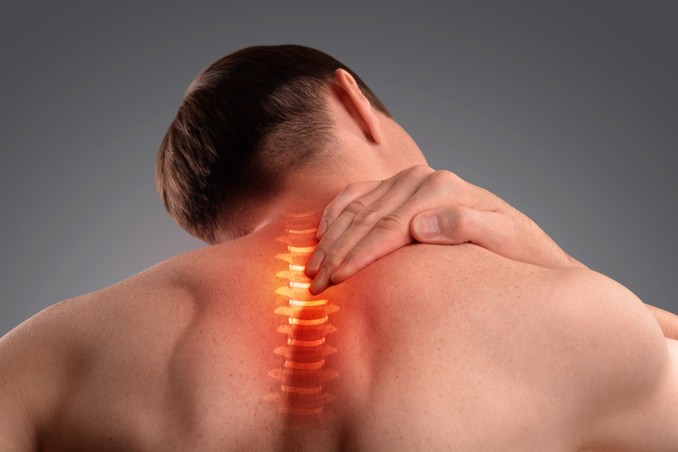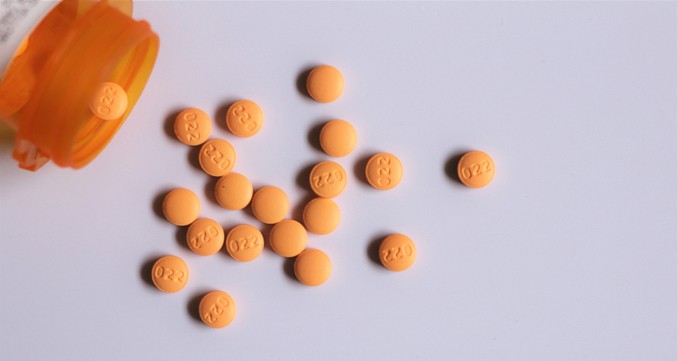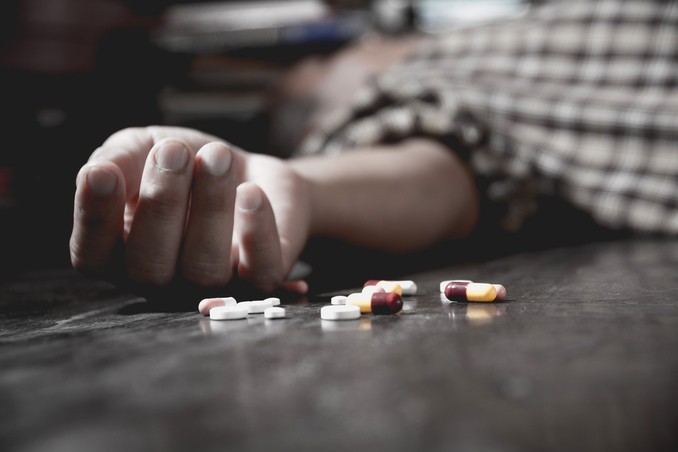When considering the question, ‘How Much Cyclobenzaprine is too much,’ the answer is a short one: any more than you need or have been prescribed. You can overdose on any drug, but especially a muscle relaxer. Despite this, it is harder to overdose on Cyclobenzaprine than on other drugs. It is easier, however, when in combination with other depressant-type drugs.
This drug is used to treat muscle pain and spasms. It is used to relieve pain and discomfort caused by strains, sprains, and other muscle injuries. Cyclobenzaprine is in a class of medications called skeletal muscle relaxants.
Keep reading to find out more about safely using Flexerall and other forms of cyclobenzaprine, and how to get help if muscle relaxers have become a problem for you or a loved one!
What is Cyclobenzaprine?
Table of Contents
- What is Cyclobenzaprine?
- How Cyclobenzaprine Works
- Cyclobenzaprine Highlights
- Cyclobenzaprine Dosage and Side Effects
- Can Cyclobenzaprine Have Serious Side Effects?
- Drug Interactions With Cyclobenzaprine
- Drugs You Should Not Take With Cyclobenzaprine
- Other Interactions That Can Increase Your Risk of Side Effects
- How Much Cyclobenzaprine is Too Much: Taking Muscle Relaxants Safely
- What are the Forms and Strengths of Cyclobenzaprine?
- Prescribed Dosage for Relief of Muscle Spasms
- Special Dosage Considerations
- Cyclobenzaprine Overdose
- What are the Symptoms of an Overdose?
- What to do in Case of an Overdose

Cyclobenzaprine is an oral tablet and is a prescription drug. It is available as the brand-name drug Fexmid. It is also available as a generic drug. Generic drugs usually cost less than the brand-name version, and in some cases, they may not be available in all strengths or forms as the brand-name drug. Cyclobenzaprine also comes as an oral extended-release capsule.
Cyclobenzaprine is used to help relax muscles, as well as relieve pain, stiffness, or discomfort. This pain solved is usually caused by strains or injuries to your muscles. It is used along with rest and physical therapy. It should only be used for two to three weeks at a time because you can too take much of the drug.
Cyclobenzaprine is often used as part of combination therapy. This means you may need to take it with other medications.
How Cyclobenzaprine Works
Cyclobenzaprine belongs to a class of drugs called muscle relaxants. This class of drugs is a group of medications that work similarly and used to treat similar conditions. It is not known exactly how this drug works to relax your muscles. It is thought that it may decrease the signals from your brain that tell your muscles to spasm.
Other Names for Cyclobenzaprine
- Brand name: Fexmid, Flexeril
Cyclobenzaprine Highlights

- Cyclobenzaprine is an oral tablet that is available as both a generic and brand-name drug.
- It also comes as an extended-release capsule that you take by mouth.
- Cyclobenzaprine oral tablet is used to help relieve muscle spasms.
- It is used along with rest and physical therapy.
- It should only be used for two to three weeks at a time.
Cyclobenzaprine Dosage and Side Effects
Known to cause drowsiness and dizziness, Cyclobenzaprine is known for side effects likely to happen in the first few hours after you take it. It can also have other side effects such as:
- Dry mouth
- Dizziness
- Fatigue
- Constipation
- Drowsiness
- Nausea
- Heartburn
If these effects are mild, then they are known to go away quickly, within a few hours. If not, they may go away within a few days or a couple of weeks. If they are more severe or seem not to go away, speak with a doctor.
Can Cyclobenzaprine Have Serious Side Effects?
Yes, be sure to call your doctor right away if you have serious side effects. Call 911 if your symptoms feel life-threatening. Serious side-effects might include the following:
- Heart problems
- Fainting
- Heart palpitations
- Confusion
- Trouble speaking or understanding
- Loss of control or numbness in your face, arms, or legs
- Trouble seeing in one or both eyes
- Serotonin syndrome
- Agitation
- Hallucinations
- Seizures
- Nausea
Drug Interactions With Cyclobenzaprine

It is very possible that Cyclobenzaprine can interact with other medications, vitamins, or even herbs that you may be taking. Drug interactions occur when a substance changes the way a drug works. This can be harmful or prevent the drug from working well.
To help avoid interactions, it is best if your doctor can help you to manage all of your medications carefully. Be sure to tell your doctor about all medications, vitamins, or herbs you’re taking. If you are taking Cyclobenzaprine without a prescription, this is considered abuse and may develop into addiction from which you will need to detox. Be sure to ensure that you know how the drug will interact with anything else your taking to be sure of your safety.
Drugs You Should Not Take With Cyclobenzaprine
Monoamine oxidase inhibitors (MAOIs) should never be taken with Cyclobenzaprine. Doing so can cause extremely dangerous effects in the body. Examples of MAOIs include:
- Selegiline
- Rasagiline
- Tranylcypromine
When taking this drug with an MAOI or within 14 days of stopping an MAOI, it can result in serious side effects such as seizures.
Other Interactions That Can Increase Your Risk of Side Effects
Taking cyclobenzaprine with other medications can also raise your risk of side effects from cyclobenzaprine. This is because the amount of cyclobenzaprine in your body may be increased by these drugs. Examples of these drugs include:
- Benzodiazepines: These include triazolam, alprazolam, and midazolam. If you combine these medications you may have more sedation and drowsiness.
- Barbiturates: Phenobarbital can cause you to have more sedation and drowsiness.
- Anti-depressants: Certain drugs used to treat depression, such as fluoxetine, venlafaxine, amitriptyline, or bupropion, may provide you to have more of a risk to develop serotonin syndrome.
- Verapamil: Increases a greater risk for serotonin syndrome.
- Anticholinergic drugs: These include tolterodine or oxybutynin. These medications increase your chance of dry mouth or not being able to urinate.
Drug Interactions That Make the Drug Less Effective
When certain drugs are used with Cyclobenzaprine, it can decrease the effectiveness of both drugs. One example of these drugs includes guanethidine. Cyclobenzaprine often blocks blood pressure, lowering the effect of guanethidine. This might increase your blood pressure.
How Much Cyclobenzaprine is Too Much: Taking Muscle Relaxants Safely
When it comes to the cyclobenzaprine oral tablet, your dosage, drug form, and how often you take the drug will depend on a variety of factors:
- Age
- Condition being treated
- How severe your condition is
- If you even have a condition being treated
- Other medical conditions you have
- How you react to the first dose
What are the Forms and Strengths of Cyclobenzaprine?
- Generic: Cyclobenzaprine
- Form: Oral tablet
- Strengths: 5 mg, 7.5 mg, 10 mg
- Brand: Fexmid
- Form: Oral tablet
- Strengths: 7.5 mg
Prescribed Dosage for Relief of Muscle Spasms
Below are the recommended dosages for the relief of muscle spasms. Any ingestion of this drug other than with the purpose of its prescribed reason is the abuse of the drug. You should not take more Cyclobenzaprine than prescribed at any time.
- Adult dosage (ages 18–64 years)
- 5–10 mg taken 3 times per day.
- Child dosage (ages 15–17 years)
- 5–10 mg taken 3 times per day.
- Child dosage (ages 0–14 years)
- Cyclobenzaprine shouldn’t be used in people younger than 15 years.
- Senior dosage (ages 65 years and older)
- When it comes to older adults, the kidneys may not work as well as they used to. This can cause your body to process drugs more slowly. Because of this, Cyclobenzaprine will stay in the body for a longer period of time, and this raises the risk of side effects. Most often a doctor will prescribe a lower dose or different schedule to avoid levels of Cyclobenzaprine building up in the body.
Special Dosage Considerations
If you struggle with liver problems, you need to start on a lower dose. This can help prevent levels of this drug from building up too much in your body. If you suffer from even moderate liver problems, you should not use this drug.
Cyclobenzaprine Overdose

Cyclobenzaprine oral tablet is supposed to be used as a short-term treatment. This drug should never be used for more than 3 weeks, it comes with risks if you don’t take it as prescribed.
If you stop taking Cyclobenzaprine suddenly, or not at all, your symptoms may get worse. This can increase muscle spasms, or pain, because you may go through a slight overdose. If you miss doses or don’t take the drug on schedule, then your medication may not work as well or may stop working completely. In order to have this drug work as it should, you need to have a certain level of the substance in your body at all times.
What are the Symptoms of an Overdose?
If you take too much Cyclobenzaprine, symptoms of an overdose of this drug can include:
- Fainting
- Heart palpitations
- Confusion
- Trouble speaking or understanding
- Loss of control or numbness in your face, arms, or legs
- Trouble seeing in one or both eyes
- Agitation
- Hallucinations
- Seizures
- Nausea
What to do in Case of an Overdose
If you think that you have taken too much of this drug, you need to call a doctor or local poison control center immediately. If your symptoms are severe, call 911 or go to the nearest emergency room right away.
If you feel you may be having issues with reliance on muscle relaxants (or any other type of substance) please don’t hesitate to call us today at Find Addiction Rehabs to find the best resources for treatment nationwide!
Anna M. joined Find Addiction Rehabs with extensive experience in the field of addiction treatment. As a former Nurse Practitioner in Miami, she found her passion for addiction treatment when a family member was lost to his disease. With each article and resource, she hopes to save other families from experiencing the anguish of a loved one’s passing due to drinking or drugs.


